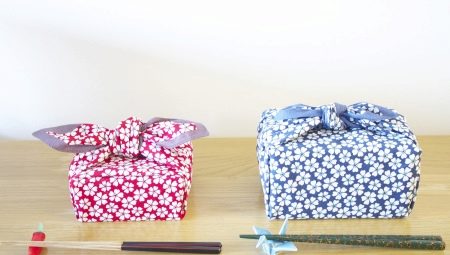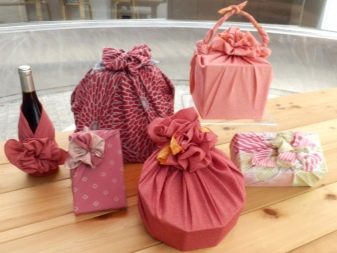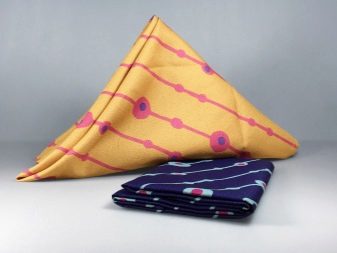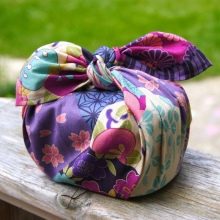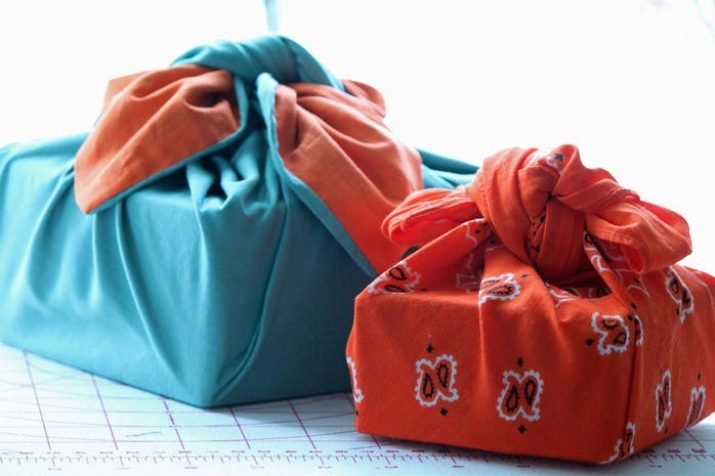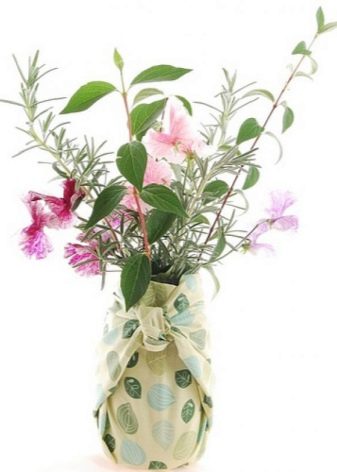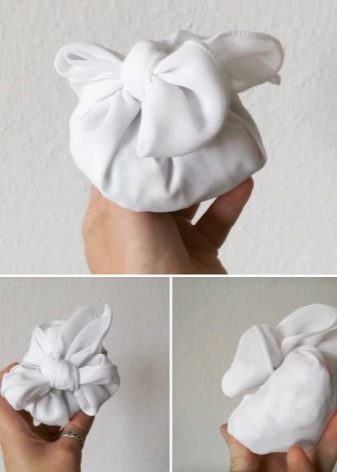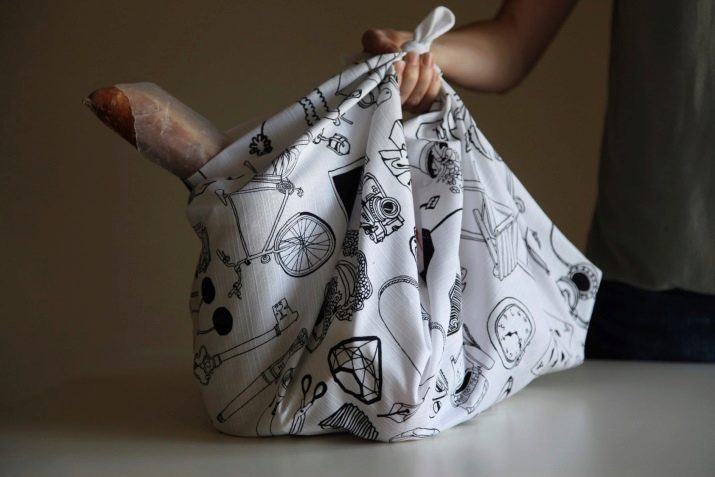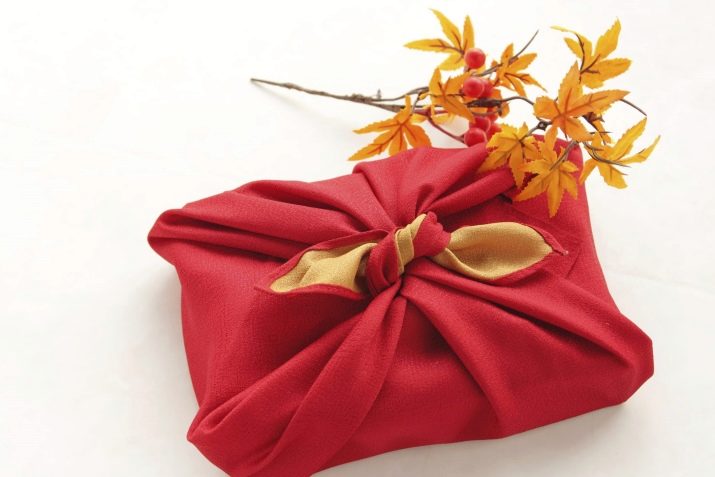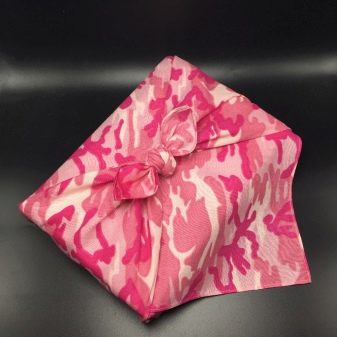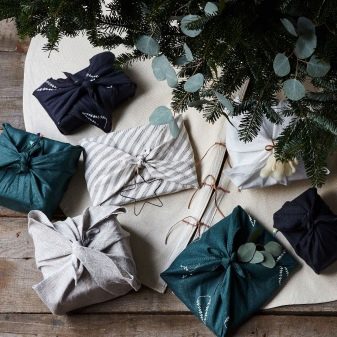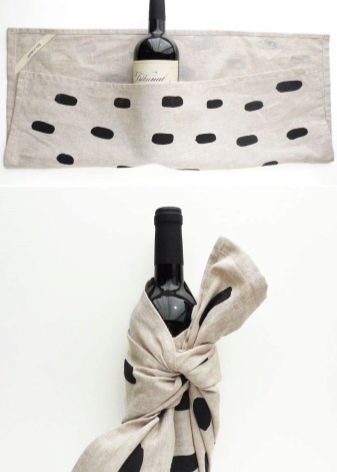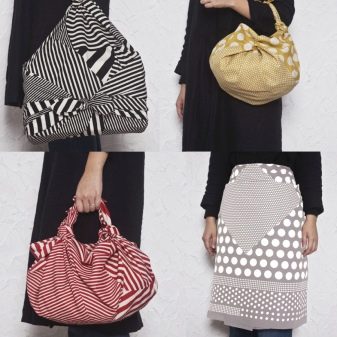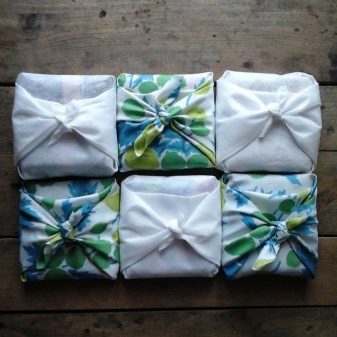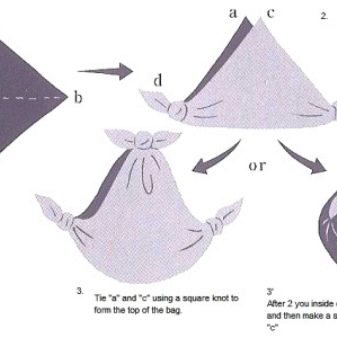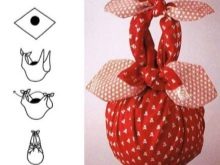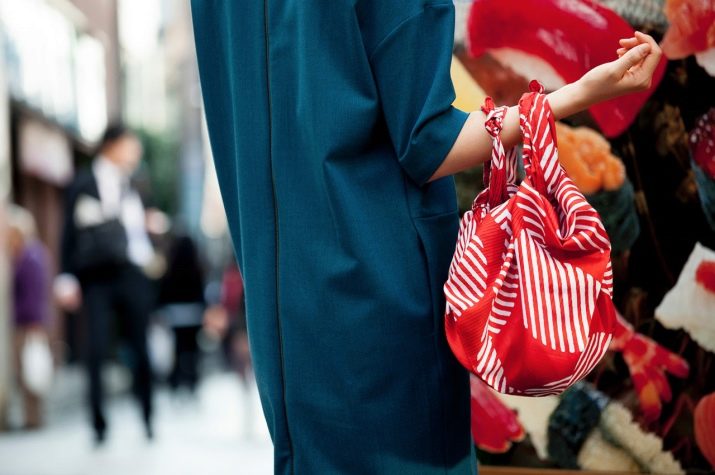Furoshiki is the Japanese art of packing things into fabric. It is not known for certain when it appeared. But on engravings, dated II century n. e., there are already images of women carrying convolutions of cloth on their heads. Furoshiki bag analogs are found in many cultures, but only in Japan did this hobby acquire such scope. The stage of greatest development fell on the VII-VIII century AD. e.
The word "furoshiki" can be translated as "mat for going to the bath." The rug was taken with them to stand on it when dressing up in a bathing kimono, the street kimono and bathing kimono after water procedures were wrapped in it. Over time, pieces of cloth began to be used to carry various items. And although now there is no practical need for this art, it continues to be popular in Japan and in other countries of the world.
There are no restrictions on the use of the furoshiki technique. You can use it in everyday life, on thematic evenings or for gift decoration. From a small piece of fabric, you can build a bag, a bag, just packing for things or even a briefcase.
Features
This art can be applied in four cases:
- when you need to move something;
- when you need to pack a beautiful gift;
- when you need something to pack to save the subject;
- for home and table decoration.
In order to carry something, you can fold your bag on your shoulder or to carry it in your hands. It may be a bag for carrying it on the head, although this is rarely seen now. Suspended fabric bag for carrying a child in front can also be made in this technique.
And although this accessory will look very unusual, you need to remember that if you need to get the thing out of the bag, you will need to untie it in whole or in part. And if you need to collect products from the store in such a bag, for example, you will need a separate place for this. This is not very convenient in the reality of the European way of life. Although for fashionable female students such a bag would be an excellent alternative to heavy frame bags. It is necessary to think in advance about which scheme to use.
Even the most unsightly gift will look good in a beautiful wrapper of fabric. Hard, soft or flowing fabrics will create a unique wrapper. For this purpose, usually used bright canvas with patterns. For many centuries of development of this art accumulated packaging schemes for any form. For example, for bottles (one, two or even three), books, rectangular and square objects, dishes, souvenirs or flowers.
And also use this technique when you need to save something for a long time. It is worth saying that one of the reasons for the emergence of this art was precisely the need to preserve food. Unlike the European inhabitants, the Japanese did not need to store food for a long time. Food could be obtained all year round, so food was not stored for more than 3-4 days. A habit of our grandmothers to wrap clothes and objects in fabric before being put away for storage can be some analogue of such a designation of furoshiki.
Furoshiki used not only for packing items during transportation, but also to decorate your own home. For example, when making bottles, vases, floor lamps. Special mention deserves decoration in the fabric of flower pots and kitchen utensils.In addition, the Japanese practice wrapping sweets and sweets. In addition, each candy should be wrapped in a separate flap. Fruit may be packaged together.
Materials
Restrictions on materials that are used in furoshiki, no. Everything depends solely on the desires of the designer and the specific circumstances. In Japan, they like bright fabrics, which they use for needlework. We give general recommendations for the most common cases.
To create bags, it is best to use durable, dense, but not very heavy fabrics. Suitable cambric, Bengaline, velor, gabardine and staple fabrics. And also material Jacquard and diagonal. These materials are characterized by lightness, wear resistance, simplicity. It is also important that they almost do not change their shape, which means that a piece of fabric will last longer. The material can be monotonous or with a pattern depending on your style of clothing.
For decorating the house there are no restrictions in the materials, in general. But it is recommended not to use fleecy fabrics such as velvet, velor, velvet, as they will collect dust and lint on themselves. For small items, it is better to use fabrics with a high degree of drapability. For example, batiste, staple, chiffon, silk and Madonna.
In order to pack the item "in the back box", you can use both old sheets and specially purchased fabric. Suitable cotton, linen and chiffon fabrics.
In order to pack a gift, it is recommended to take patterned, loose materials. This is dictated by the fact that if it is planned to make a handle when packing a small object, it will be made easier from soft and thin materials. If you leave the handles and knit large knots are not planned, then there are no restrictions in the materials. Silk, batiste, jacquard, velvet, chiffon, guipure, viscose, velor, satin and polyester will work well.
The size of the segment can be any convenient. Traditionally, in Japan, square pieces of fabric with sides of 48 cm, 52 cm, 70 cm, 100-105 cm, 128 cm, 174 cm, 195 cm were used.
Experts also recommend starting with a 40x80 cm cut. If you plan to use a material with a pattern, then look in advance at how the pattern will "fit."
Application options
Let us give a few examples of how to diversify your life with the help of a piece of fabric and the technique of wrapping objects.
Wrap for two bottles
We need a piece of material, in the diagonal equal to three times the length of one bottle.
- Fold the bottles so that the necks look at different angles of the same diagonal, and there is a gap of 7-8 cm between the bottoms.
- We twist the “roll” of cloth with the “filling” of the bottles.
- Fold in half so that the bottles are near. Tie a knot from the corners above the neck.
To put such a design will be difficult, but you can hang.
A bag
Consider how to quickly fold the bag (for example, take the student version with books):
- we will need such a segment so that four book widths fit in the diagonal;
- we divide all the books into two parts, and put them on the edges of the segment;
- now we wrap the remaining corners on them (closest to them) and fold it again so that the covers are completely hidden under the fabric and the books themselves are near;
- we will shift each free end of the canvas to the opposite side;
- overturn the structure, knot the free ends of the web in a knot at the height we need.
Packing bed linen
How to pack a stack of bed linen for storage:
- Spread the material in 3 stack heights;
- put in the center of the pile;
- alternately tying diagonally opposite ends of the material;
- hanging "ears" fill inside to completely hide the stack.
Round Item Packaging
With the help of furoshiki, you can beautifully wrap a rounded object (for example, a case):
- choose such a piece of fabric so that it is equal to two lengths of the case;
- put the case on one of the corners, and wrap the "roll";
- we wrap the corners sticking out of the case so that the end of the “roll” does not fall out;
- form a beautiful knot or bow.
Furoshiki is a beautiful traditional Japanese art that will help bring harmony and beauty to life.
For information on how to pack your gift using the furoshiki technique, see the following video.
